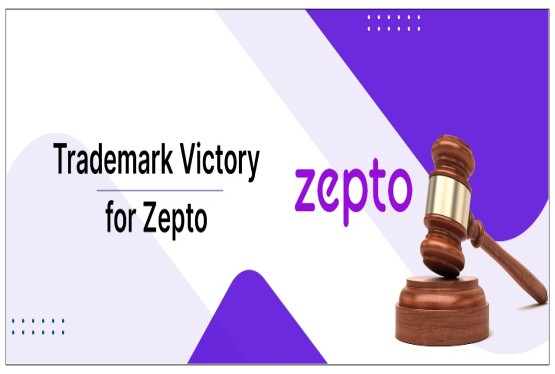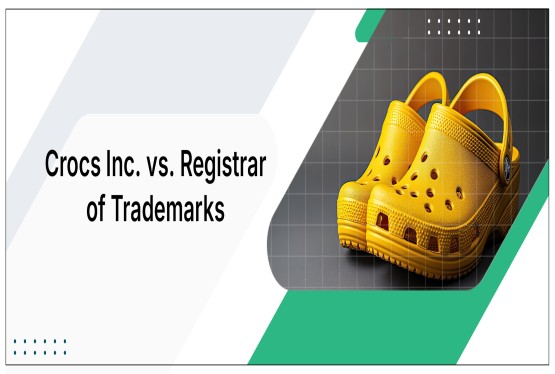Have you ever wondered why, after filing a Trademark Application, you receive an objection via Examination Report under Section 9(1)(b) on the absolute grounds for refusal of the Trademarks Act, 1999, which states as:
The objection is raised under S 9(1) (b) of the Trade Marks Act 1999, as the mark consists exclusively of words or indications which may serve in trade to designate the intended purpose of the goods or other characteristics of the goods. Hence, the above application is liable to be refused.
In case, you have received Trademark Objection under Section 9(1) (a), Click here.
To understand the objection raised under section 9 (1) (b), first one has to understand what section 9 (1) (b) defines. Section 9 discusses the absolute grounds for refusal of registration of the mark, and sub-section (1) specifies instances where registration should not be allowed, such as where the mark lacks any distinctive character; consists exclusively of marks or indications used in trade to designate the quality, intended purpose, nature, etc. of the goods; and where the mark has become customary in the current language or in the bona fide and established practices of the trade.
The purpose of this article is to focus on the principle of "acquired distinctiveness" in Indian trademark law and demonstrate how Section 9 (1)(b) of the Indian Trade Marks Act, 1999 is a boon to the trademark owners.
Let’s understand each term mentioned in the section 9 (1) (b) of Trademark Act.
Your mark should not be limited to indications that may help your business to designate the following:
-
Kind: Use of words such as old, new, large, extra large, and so on;
- Quality: Use of laudatory words such as Good or Best to describe quality;
- Quantity: the use of numerals to represent weights or measurements. For eg: Kgs, litres, and so on;
- Intended purpose: Words that refer directly to the use of goods or services, such as Rustfree for Paints.
- Values: denoting worth or significance. For example, 24K for gold;
-
Geographical Origin: If the goods or services have a reputation associated with or closely related to the geographical location of the product or service, the reputation associated with or closely related to the goods or services applied therein, it may raise an objection. The same is true when the name of a mountain is used for agricultural products, the name of a river, sea, or ocean for fish products, the name of a street, and so on.
Acquired Distinctiveness/Secondary Significance
The trademark law states that a trademark with a secondary meaning or significance will not be denied registration even if it falls into one of the categories listed in Section 9. It is well-established law that common language words, descriptive words, or common words and names cannot be trademarked by any trader unless and until such trade names have acquired such a strong reputation and goodwill in the market that the common language word has taken on secondary importance. Secondary significance here would imply that other traders in that line of business recognise that such common words have come to denote the goods of a specific trade.
How to prove acquired distinctiveness?
Section 9(1)(b) of the Trade Marks Act of 1999 prohibits the registration of descriptive trademarks (hereinafter the Act). However, an exception is provided under the Act itself, in Section 32 of the Act, which states that "where a trademark is registered in contravention of sub-section (1) of section 9, it shall not be declared invalid if, as a result of the use which has been made of it, it has acquired a distinctive character in relation to the goods or services acquired after registration and before the commencement of any legal proceedings challenging the validity of such registration."
To register a descriptive mark, the proprietor must persuade the Examiner that the proposed mark has acquired secondary significance and is eligible for protection under Section 32 of the Act.
The question is how to demonstrate that any mark has acquired secondary significance. To prove the use of any mark, the proprietor typically submits invoices, advertisements, and other relevant promotion evidence. The Bombay High Court clarified the position in this regard in the case of Pidilite Industries Limited and Ors. vs. Vilas Nemichand Jain and Ors [2015 (64) PTC 185 (Bom)].
The court was asked to decide whether establishing that the plaintiff was a prior user and that the mark had acquired reputation and goodwill would entitle the plaintiff to an injunction against passing off.
The Bombay High Court said no, emphasizing that mere evidence of extent of use, such as invoices, financial figures of sales, and so on, may show use or even increased use; however, something more is required to show that the use is such that the mark has become distinctive. It is a well-established legal principle that use does not equal distinctiveness, and when it comes to a descriptive mark, even extensive use is insufficient; instead, the proprietor of such mark must demonstrate that the secondary meaning acquired has completely displaced the primary descriptive meaning of the mark. To prevail in such an action, the plaintiff must demonstrate that the goods bearing the mark have become exclusively identified with his goods, and in the case of a descriptive mark, evidence from members of the public is required as well, not just people who are specially placed to attest to its uniqueness.
Furthermore, the court held that in order to register a mark in relation to a descriptive word or expression, it must be demonstrated that the mark has been widely publicized and, as a result, has acquired some sort of secondary distinctive meaning.
Conclusion
In terms of prohibiting the use of descriptive words in a trademark, Indian trademark law is on par with any other law in the world. Adopting a common language word and using it as a trademark is a risky practise because it increases the possibility of confusion in the minds of the general public. However, there are cases where a previously prohibited descriptive mark gains secondary meaning/distinctiveness and customers associate the trademark with the applicant's business. That's when the principle of "acquired distinctiveness" comes into play. This principle is stated clearly in the Proviso to Section 9 (1) (b) of the Trade Marks Act, 1999, and is widely accepted by the courts.
If you are not sure on how to best reply for your objection or prepare documents in support of your show-cause hearing, you are welcome to reach out at info@ccoffice.in or connect at 9988424211.

_(b)_of_the_Trademark_Act,_1999_(1)_crop6_thumb.jpg)































_crop10_thumb.jpg)




























_crop10_thumb.jpg)
_crop10_thumb.jpg)






_crop10_thumb.jpg)








_crop10_thumb.jpg)
_crop10_thumb.jpg)



_crop10_thumb.jpg)





























_crop10_thumb.jpg)

















_crop10_thumb.jpg)






_crop10_thumb.jpg)












































































































































_crop10_thumb.jpg)




































_crop10_thumb.jpg)












_crop10_thumb.jpg)






















